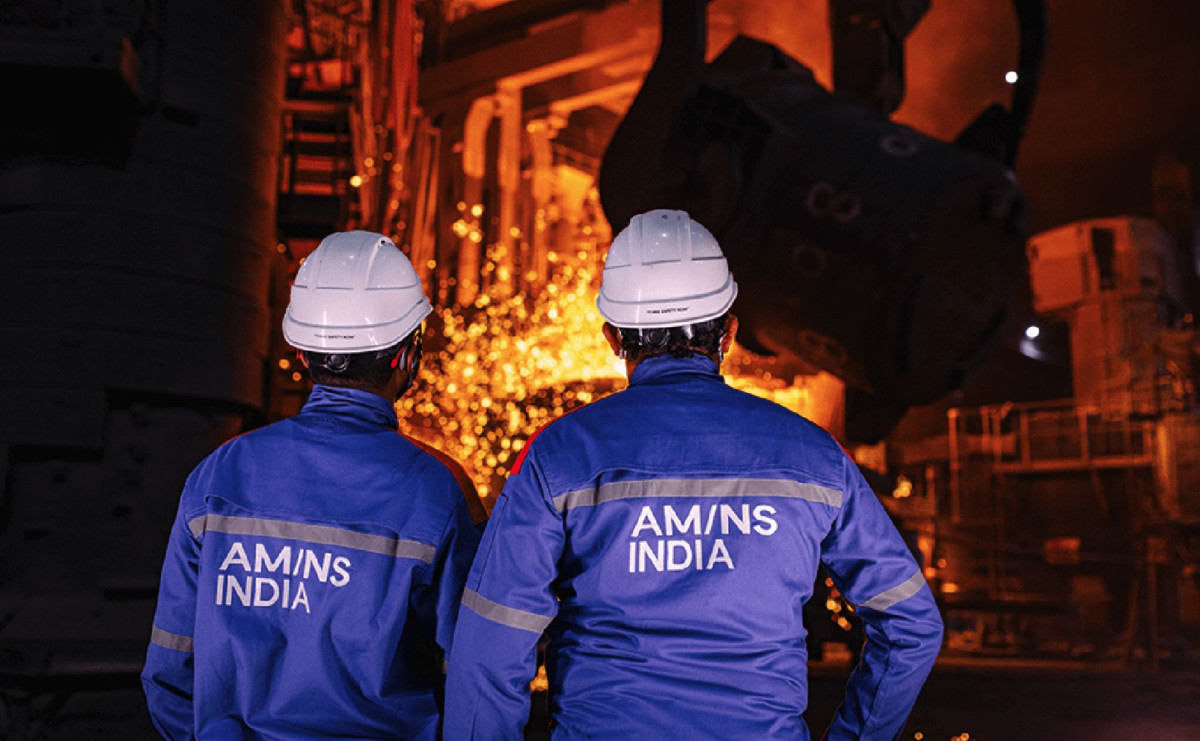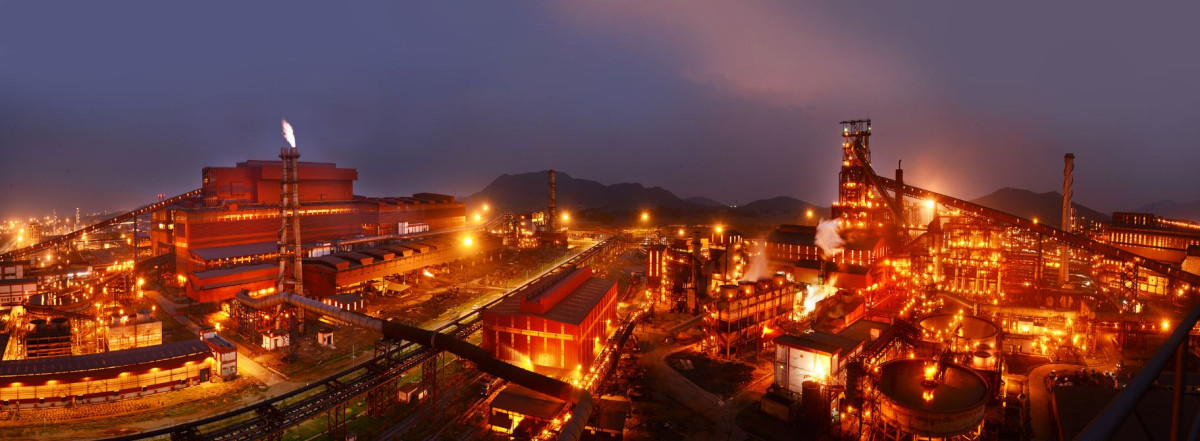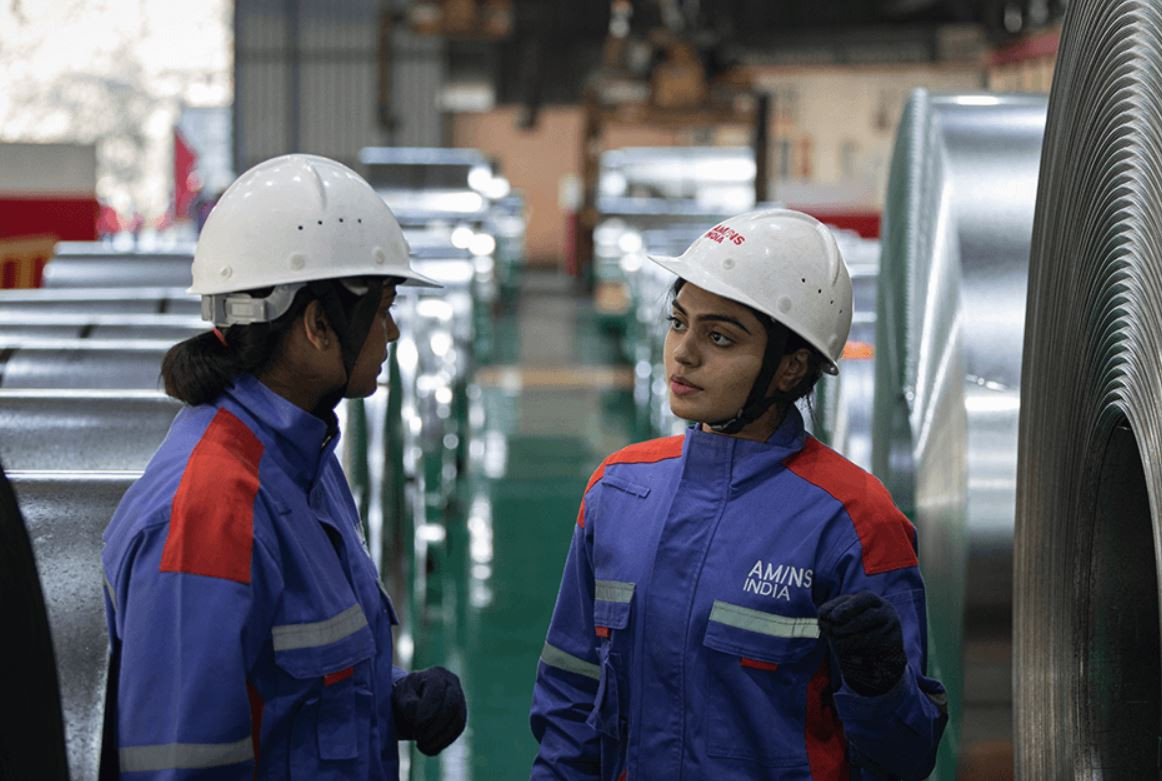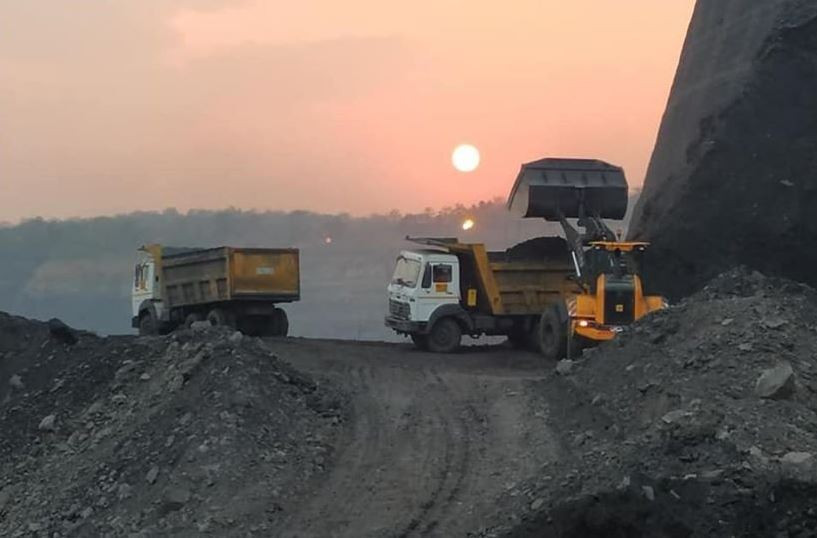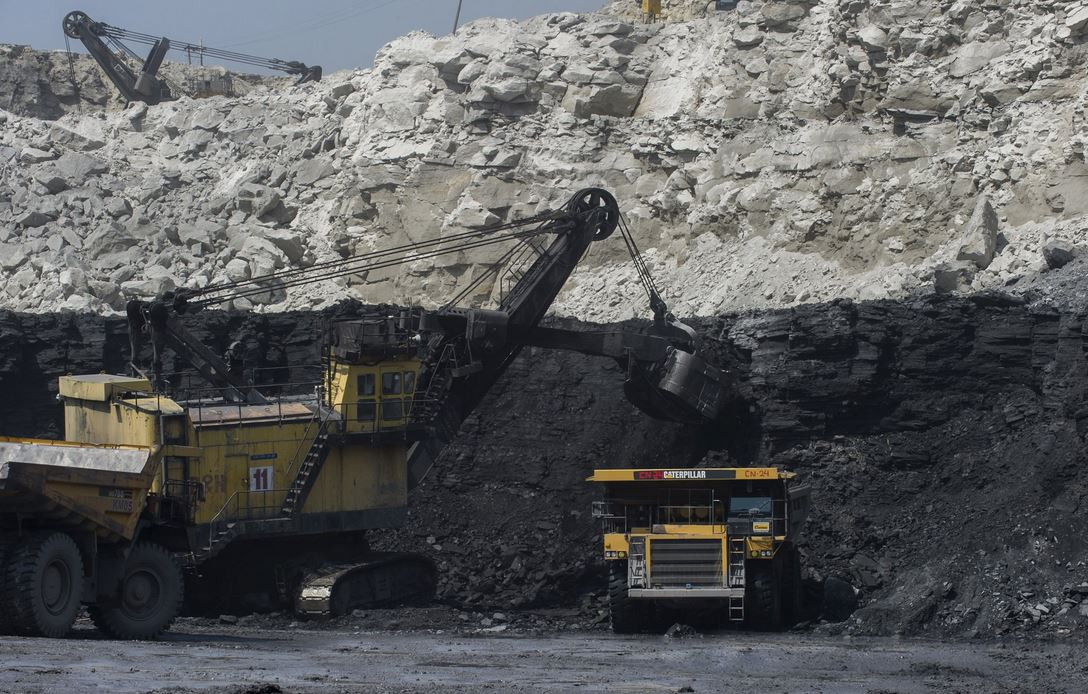India’s policy and funding vacuum makes corporate net zero targets unviable
*** Please note: This article is part of the CLEW focus on company climate claims.
This dossier lists our existing publications and future content plans, and our upcoming events are here.
This blog explains why we decided to launch the project.***
India’s industrial corporations are joining the global trend towards net zero targets in increasing numbers, but a policy and funding vacuum puts question marks on many of their climate pledges. Combined with a lack of oversight, this creates an open invitation for corporates to set a climate target, only to continue business as usual.
“There are no checks and balances ensuring that the companies are carrying out these promises,” said Parth Kumar, programme manager at the industrial pollution division of the non-profit Centre for Science and Environment in New Delhi. “We have environment laws and pollution laws, but we don’t have climate laws, like the European Union does, that make emission reduction mandatory.”
Its intensive coal use has made India the world’s third largest CO2 emitter, with industry responsible for over a third of the roughly three gigatonnes the country emits every year. While power generation and transport, the two other big polluters, have a clearer decarbonisation path ahead of them, core industrials face much greater uncertainty, which slows the transition.
At COP26 in Glasgow last year, Prime Minister Narendra Modi set a 2070 net zero target for the country. Large Indian corporations quickly followed suit and included “net zero” and “carbon neutrality” pledges in their corporate strategies. Some even committed to the Science Based Targets Initiative to reduce emissions across their value chains. But like elsewhere in the world, many of these pledges rely heavily on carbon offsets, which have increasingly come under fire for being unreliable, and no Indian regulator can currently certify the claims.
Passing the buck
Indian IT company Infosys announced as early as 2020 that it had achieved carbon neutrality across its value chain. Some banks and software companies (State Bank of India, Tata Consultancy Services) expect to hit net zero carbon emissions in the coming eight to ten years by switching entirely to clean electricity. Steel giants Arcelor Mittal and Tata Steel plan to hit net zero around mid-century, while fossil fuel explorers like the government-owned Oil and Natural Gas Corporation expect their emission reduction commitments to dovetail with India’s overall 2070 target.
Most of these pledges will not entail near-term emission cuts. “We often find companies relying on state-of-the-art disruptive technologies like green hydrogen and others, and passing the buck with a 2050 net zero pledge,” Kumar said, referring to companies that continue to invest in coal-based manufacturing processes, such as steel.
“Indian companies need to put out decarbonisation strategies that are implementable now and in the near future,” Kumar said, adding that the first companies are starting to take the topic seriously. “It would be unfair to say that Indian industry isn’t doing anything; in some cases, they are taking the lead in reducing emissions and are ahead of the government in understanding the technology that’s available and how to incorporate it.”
Cautious optimism about government’s climate strategy
In an analysis of Environmental, Social, and Governance (ESG) performance within the Asia Pacific region last year, BofA Securities found that India lags regional peers in adequate environment regulation, and in corporations recognising where and how to reduce emissions. Overall, less than 10 percent of India’s market capitalisation has committed to net zero carbon emissions.
But change could be afoot. At the COP27 negotiations at Sharm El-Sheikh, India submitted its long-term low-carbon development strategy, and environment groups have shown cautious optimism about its intent. It outlines a transition plan for energy and industrial systems, discusses the shift away from fossil fuels, climate finance and forest management. The country’s parliament is also currently debating the merits and design of a carbon credit trading platform, while the securities market regulator has made sustainability reporting mandatory for the top 1,000 listed companies from the current fiscal year. But there is no clarity yet on the kind of material disclosures and methodologies that qualify for reporting, or what inspections will be in place, leaving the door open for corporations to greenwash their sustainability credentials.
ArcelorMittal bets on coal despite net zero target
Global steel giant ArcelorMittal provides a prominent example for the contradictions and difficulties related to industrials’ net zero targets. In its May 2022 corporate sustainability report, the company spelled out its long-term plans for manufacturing low-emission steel across its plants in Europe and North America. Broadly, the plans involve phasing down virgin steel production and replacing it with the less polluting steel scrap process, as well as replacing coal with natural gas and green hydrogen at its furnaces.
By the company’s own admission, the plans are still in their early stages, involving preliminary agreements with local governments on funding and experiments with new technologies. But the shift is imperative for ArcelorMittal if it wants to achieve its 2030 goal of reducing its carbon emission intensity by 25 percent, and hitting net zero emissions by 2050.
The picture for its Indian operations is different. The sustainability report skipped over an ongoing $7.4 billion investment through AM/NS India (ArcelorMittal’s joint venture with Japan’s Nippon Steel) to double the existing steel producing capacity at the port town of Hazira, Gujarat, to 15 million tonnes per annum by 2026. AM/NS intends to keep producing for the steel-hungry Indian market by building coal-fired blast furnaces, a technology that its parent company is starting to disavow in Europe. AM/NS has also signed agreements with the Odisha state government, in India’s iron ore-rich belts on the eastern coast, to set up 30 million tonnes of coal-fired new steel capacity in the future.
ArcelorMittal did not reply to questions on how these expansion plans in India align with the company’s long-term net zero commitment. Details on the India division are scant in a September 2022 corporate presentation by AM/NS India, except for a commitment to increase the use of renewable energy.
AM/NS isn’t the only Indian steel company that’s promising to cut emissions at European plants, while expanding coal-intensive production at a clip at home. India’s largest steel company Tata Steel aims to start rolling out sheets of low-carbon steel before 2030, with 30-40 percent lower carbon emissions, at its IJmuiden plant in the Netherlands, while doubling domestic coal-based steel production capacity to 40 million tonnes a year by the end of the decade. With the bulk of its operations in India, Tata Steel has set an overall net zero target for 2045, but so far only publicly reported a pilot programme to capture five tonnes of carbon dioxide a day from its flagship blast furnace at the industrial city of Jamshedpur.
Little incentive to look beyond coal
Industry experts say there is no economic case yet for the switch to low-emission production methods. “India has plenty of iron ore reserves and coal is cheaper than natural gas, so there is really no incentive for steel companies to invest in anything but a blast furnace to make cheap steel,” said metals analyst Amit Dixit, vice president at ICICI Securities. “Without significant policy incentives in place, either as a carbon tax or funding from the government to reduce emissions, or an agreement among producers and buyers to share the higher costs of low-carbon products, decarbonising industry is going to be difficult.”
There are initial signs that green hydrogen, which is considered key for green steel production, might eventually become available in India. The country’s two richest men, Gautam Adani and Mukesh Ambani, have shored up their solar and wind energy portfolios in recent years and have promised to invest billions to make green hydrogen affordable in the country. But at present, they both rely on carbon-intensive industries to secure their fortunes. Adani’s stable of businesses includes the largest private sector coal mining company in India, which is often in the news for chopping down biodiverse forests and displacing indigenous peoples, as well as the largest private thermal power enterprise. Ambani owes his billions to an oil refinery in Gujarat on India’s western coast.
Dependence on foreign markets with more stringent climate policies can be an important incentive for Indian corporations to act on their emissions, according to experts. “Indian companies that are reliant on overseas markets, either for corporate loans (like JSW Steel) or for exports (like aluminium producing firms Vedanta and Hindalco) are more serious about meeting global standards on ESG compliance than competitors that produce and sell entirely within the country,” Dixit said.
In a similar vein, having operations in India’s regulatory vacuum is becoming a burden on international industrial corporations’ ESG standing. Swiss-French building materials company Holcim recently sold its Indian subsidiaries, which controlled about 12 percent of India’s cement market, to the Adani Group for $6.4 billion – a move that boosted its global ESG credentials.
Emission-free coal production?
In the case of fossil fuel producers, net zero targets appear even more incongruous. Government-owned mining company Coal India, the largest coal producer in the world, says that better energy efficiency and switching to cleaner transport alternatives will help its emissions fall to net zero by 2024. But the company excludes so-called scope 3 emissions from its target, which result from burning its coal. Instead, the target only refers to its own emissions. This is why Coal India says its net zero commitment aligns with plans to increase coal production from 620 million tonnes last year to nearly a billion tonnes by 2024. This practice is not restricted to India: many oil majors have pledged net zero targets that ignore the climate impacts of burning their product.
Government and developed world need to step in
Despite initial signs for slow change, experts have little illusion that India’s industrial corporates will continue to rely on emission-intensive fossil fuels for some time, regardless of net zero targets. Coal-based processes will remain the primary workhorse for a while, said Atanu Mukherjee, president and CEO of Dastur Energy, who advises steel and energy companies on capacity expansion and energy transition projects, and is nudging the federal government towards introducing a carbon capture, utilisation and storage policy. The companies know that they will have to seriously address emissions eventually, but lack the incentives to initiate the shift.
“The steel and cement industries in particular are aware that decarbonisation is headed their way, and there is some trepidation about rising operating costs,” Mukherjee said. “Absent any meaningful financial support, a lot of net zero claims made by corporations right now are not operationally or economically viable; both the Indian government and the developed world need to step in to finance the transition.”
Tanya Thomas is an energy journalist based in New Delhi. Find her @tanyakondody on Twitter.

